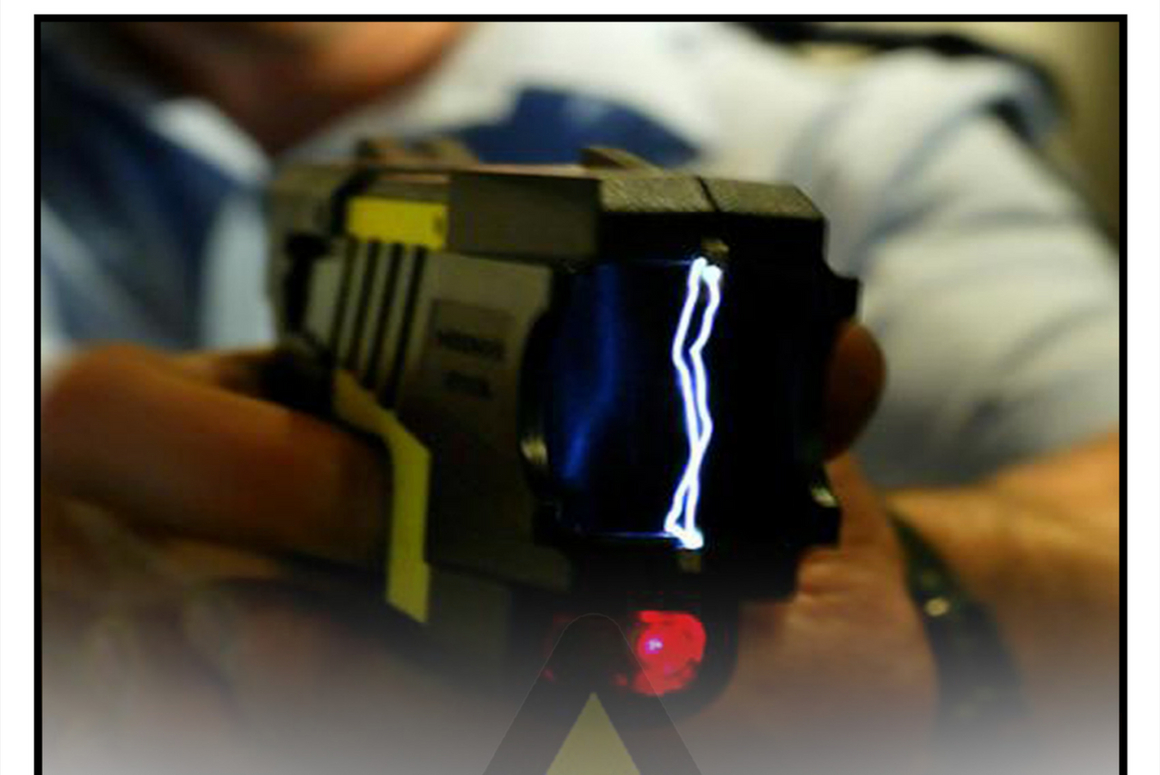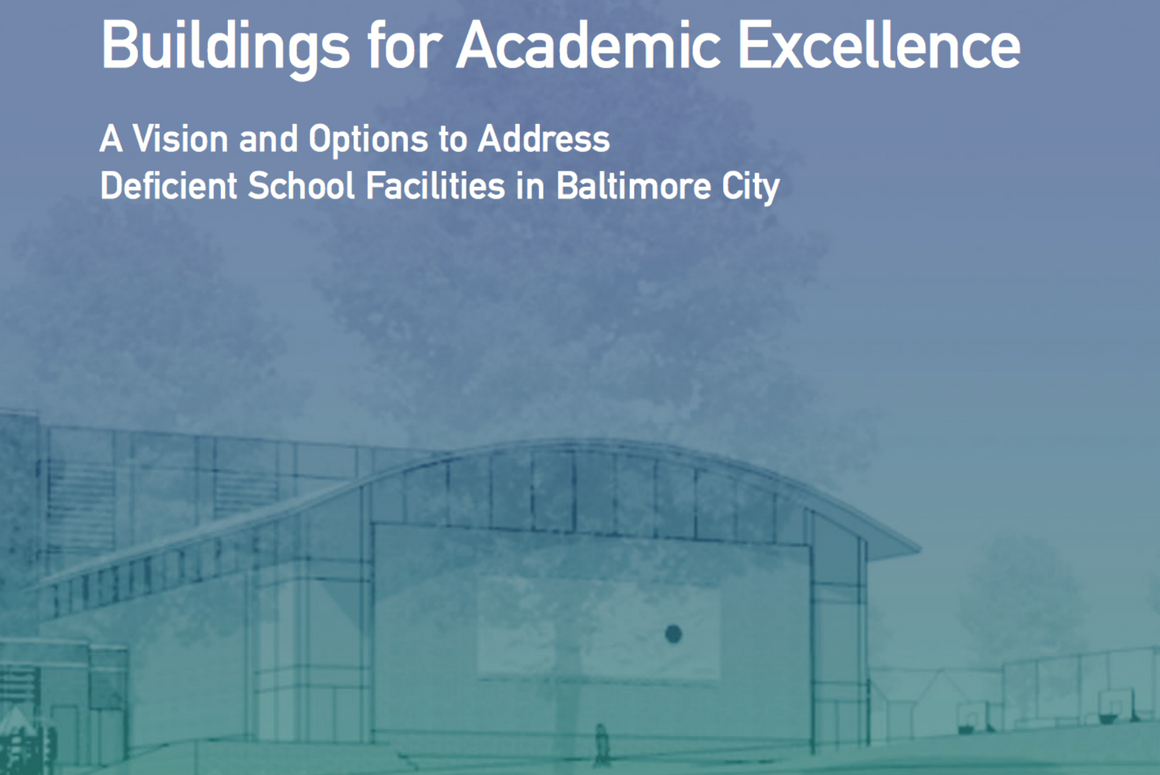Chris, a Baltimore City 9th grade student, visited a public school in a nearby suburb and was utterly shocked by what he saw. Unlike the common conditions in Baltimore City schools, this suburban school was inviting and warm: bright hallways, a modern computer lab, transparent windows, and a well- equipped library. The stark disparity in school facility conditions between the city and surrounding suburbs that Chris saw prompted him to become an education advocate for all Baltimore City school students. While his and other student efforts are critically needed, the broader Baltimore community must join him and face this glaring disparity.
This report, "Buildings for Academic Excellence," urgently asks city, state, and federal officials, and the greater Baltimore community, to act now to improve the substandard physical condition of city school buildings.
It is unacceptable – as well as unconstitutional – to deprive city students of adequate school facilities and an equal opportunity in education. The modernization of school buildings is integral to Baltimore’s education reform effort. To help both students and teachers succeed, state and city leaders must make school facility improvements a higher priority.
Building on the Academic Gains in Baltimore City
The increased state funding for school districts as a result of the enactment of the Bridge to Excellence Act of 2002 (“Thornton”), has proven that wisely investing in education and implementing reforms, produce laudable and invaluable outcomes. Since the “Thornton” formula was enacted, Baltimore City students have been achieving at higher levels each year on standardized tests. Student enrollment and graduation rates are increasing, while dropout and absentee rates have fallen. However, teachers and students are struggling to make these gains in deficient and unhealthy school facilities.
Studies have consistently shown that high quality school facilities have a measurable positive impact on student learning, attendance, and graduation rates. In Baltimore City, Digital Harbor High School and Abbottston Elementary School, which were recently renovated, demonstrate that modern and high quality infrastructure enhances academic performance.
Inadequate School Facilities Adversely Affect Educational Opportunities in Baltimore City
Adequate science and computer labs, wired classrooms with modern technology for learning, well-equipped libraries and media centers, art and music rooms, and well-maintained fields and playgrounds for physical activities are critical to the academic, emotional, psychological, and physical development of students. Yet, most Baltimore City public schools are outdated and deficient, depriving many students and teachers of very basic needs such as functional heating, as well as adequate electrical and ventilation systems.
After controlling for variables such as socioeconomic status, studies have documented that school facilities in poor condition adversely affect student achievement, and hinder teacher retention and effectiveness. Further, older school buildings with faulty and inefficient systems can be a threat to the health and safety of students and school staff. Maryland’s Constitution directs that a “thorough and efficient system of Free Public Schools” be established. A number of court decisions have concluded that an adequate education requires safe and healthy school buildings that support the academic curriculum demanded in the 21st century. Inadequate buildings deprive children of this fundamental right to educational opportunity.
The Community Will Benefit from New and Rehabilitated Schools
In addition to improving student academic gains, a large investment in rehabilitating and building new schools in Baltimore City will help to stabilize neighborhoods by attracting investment from homeowners and commercial developers. Modernized school buildings will send the message that education is valued and restore hope in struggling communities across the city. A long-term commitment to improving public school infrastructure will also create many jobs in construction and related industries for Baltimore City, stimulating the local economy. Further, schools in good repair will save tens of millions in utility costs, now wasted due to inefficient and aging systems and drafty windows.
Current State and City Funds are Insufficient to Address the $2.8 Billion Needed
Over the past 4 years, Baltimore City Public Schools have greatly improved their maintenance system for school buildings and process for implementing repairs and renovation projects. However, substantial funds are needed to bring Baltimore’s schools into acceptable physical condition so that children can learn in an adequate environment. An estimated $1 billion is required to address the backlog in needed repairs and more than 100 schools need a significant renovation or completely new building. Based on a comprehensive assessment for Baltimore City Public Schools’ facilities master plan, approximately $2.8 billion is needed to modernize all city school buildings. Over the past 5 years, the City and State have jointly contributed an average of $55.4 million per year toward the improvement of city school facilities. While this represents an increase from previous years, current funding levels fall considerably short of addressing the need.
State Funding Does Not Target the Greatest Needs
In 2004, the State reported that Baltimore City had the greatest need for state funding to bring school facilities to minimum adequacy. However, the State has not targeted the greatest facility needs as recommended by the state report. Baltimore City has received about a third of the state funding required to bring its schools to minimum adequacy, while other districts have received more than their state share. Large districts in Maryland tend to get similar amounts of state funding, regard- less of the need and local capacity to invest in school facility improvements.
The City's Low Wealth is a Limiting Factor
One might wonder why Baltimore schools need state assistance instead of relying primarily on local funding to improve its school buildings. The reason is simple; Baltimore City has neither the wealth nor the capacity to raise the wealth needed to fund the $2.8 billion facilities master plan. Baltimore City contributes a significant portion of its capital budget toward school facility upgrades, as much or more than other counties. But that capital budget is small, due to the City’s low wealth. While this report calls on the City to find innovative ways to finance and generate revenue to address its school facility deficiencies, the State must play a larger role in this effort due to Baltimore’s limited capacity to borrow.
Other States and Districts Have Proven Large Scale School Modernization is Possible
Some states and districts in the country have successfully upgraded their school facilities. This report highlights case studies of initiatives that have led to the comprehensive modernization of school facilities in several districts. If education is a priority for Baltimore City and the State, public officials and the city community at large must consider replicating the achievements of these districts.
- Connecticut funded 80% of the costs to modernize all of New Haven’s school facilities.
- Greenville County Public School System in South Carolina used innovative financing structures to borrow the capital necessary to renovate or build new all 86 of its schools buildings within 5 years.
- The state of Georgia passed legislation to allow counties to hold referenda, giving communities the ability to vote on whether or not to increase their sales tax by 1% for school renovation or new construction. The referenda were successful in approximately 98% of Georgia’s 159 counties and 21 cities, leading to unprecedented school modernization efforts.
Date
Wednesday, June 2, 2010 - 10:45am
Featured image
Show featured image
Hide banner image
Related issues
Education
School Facilities
Education Funding
Documents
Show related content
Tweet Text
[node:title]
Share Image
Type
Menu parent dynamic listing
Show PDF in viewer on page
Style
Standard with sidebar
Show list numbers
Authors
Frank Patinella


